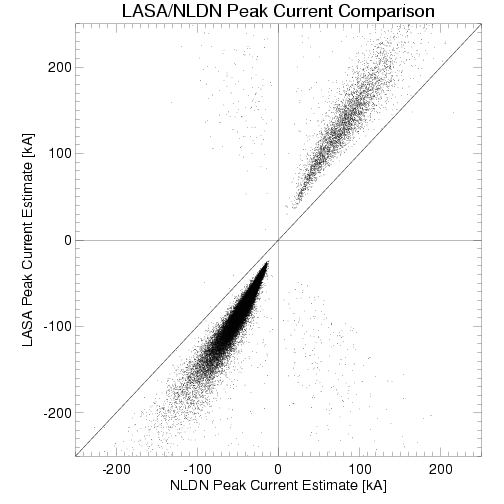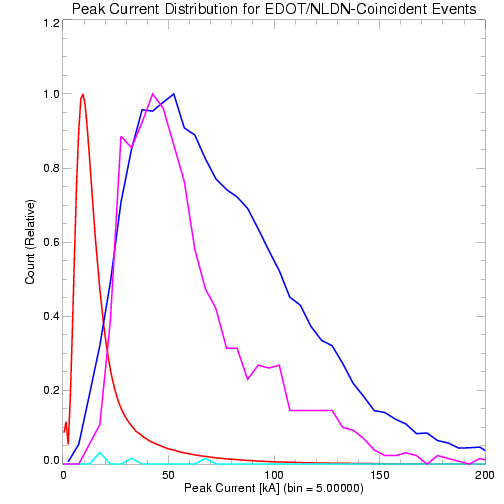

Los Alamos Sferic Array/National Lightning Detection Network Peak Current Comparison

The transmission line model is probably not directly applicable
to NBs, for two reasons. The intra-cloud nature of CID/NBs
invalidates the geometrical assumptions, and the Vrs is
probably not correct (5 x 107 m/s may be a more
appropriate propagation speed
[4]. Despite the
above issues, return stroke peak current calculation:
The plot below shows the NLDN peak current in red, the LASA
peak current in blue, and the LASA CID/NBE peak current in
magenta.
Narrow Bipolar Event Peak Currents

Links to:
